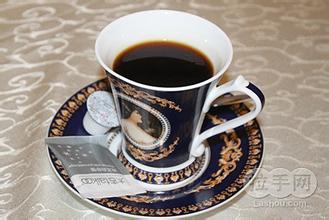Description of Flavor of Coffee Manor in C ô te d'Ivoire; introduction to taste treatment of varieties in producing areas
Introduction of coffee bean producing areas
The development of cocoa and coffee industry in C ô te d'Ivoire is basically divided into three stages: the first stage, from 1960 to 1990, was the stage of government monopoly, in which the government managed everything through the "National Fund for Price Stabilization of Agricultural production" CSSPPA (CAISSE DE STABILISATION ET DE SOUTIEN DE PRIX DE PRODUCTION AGRICOLE). The growers had no autonomy, from which the government received a lot of funds and built a lot of basic projects. In the second stage, from 1990 to 2000, in the reform stage, with the passage of time, the disadvantages of monopoly were gradually exposed, the demand for reform from growers became louder and louder, and there was a wave of privatization in the world. The government of Kuwait began to relax its monopoly on the cocoa and coffee industry, especially in 1999, when international financial organizations imposed sanctions on the country, which objectively promoted the reform. In the third stage, since 2000, the cocoa and coffee industry has been fully liberalized, and the management has been handed over to growers and operators. The government has diluted the management and levied only two kinds of taxes: unified tax (TAXE UNIQUE DE SORTIE), cocoa 220francs / kg and coffee 10francs / kg. Registration tax (TAXE registration tax), both 51. Cocoa Coffee Regulatory Authority: ARCC (AUTORITE DE REGULATION DU CAFE-CACAO), established on October 10, 2000, is another official body established after the withdrawal of the direct management of the government of Cocoa and Coffee, known as the gendarmerie of the cocoa and coffee industry. Its main functions are to issue licenses for the export and purchase of cocoa and coffee, to supervise operators' compliance with rules and regulations and to impose sanctions on violators. Assist countries to participate in international negotiations; arbitrate conflicts between operators; regulate the management of the cocoa and coffee industry at the request of the government. The agency levies a tax of 3 francs per kilogram of cocoa and coffee.
2. Cocoa Coffee Exchange: referred to as BCC (LA BOURSE DU CAFE ET DU CACAO), established on August 2, 2001, is a non-governmental organization. Its main functions are to manage cocoa and coffee trade, approve export contracts, set guiding prices of origin, and forecast harvests and make statistics. The agency levies a tax of 4.8 francs per kilogram of cocoa and coffee.
3. Supervision and Regulation Fund: FRC (LE FONDS DE REGULATION ET DE CONTROLE), established on April 12, 2002, is a non-governmental organization whose main functions are: jointly approve export contracts with the cocoa coffee exchange; check the financial situation of exporters and supervise export contracts; provide corresponding guarantees for export contracts; and notify the Cocoa Coffee Regulatory Bureau of illegal export contracts. The agency levies a tax of 63 francs per kilogram of cocoa coffee, of which 60 francs is a risk prevention tax.

Important Notice :
前街咖啡 FrontStreet Coffee has moved to new addredd:
FrontStreet Coffee Address: 315,Donghua East Road,GuangZhou
Tel:020 38364473
- Prev

Introduction to the method of describing the taste and flavor of Kenyan coffee beans
Kenya coffee bean producing country is located in the tropical monsoon area, most areas have a savanna climate, the coastal areas are hot and humid, and the plateau climate is mild. The rainy season is from March to June and from October to December, and the rest is dry season. The annual rainfall decreases from 1500 mm to 200mm from southwest to northeast. The capital Nairobi has a mild climate, with an average annual temperature of 17.7C and an annual rainfall of 1049 mm. Kenya's mineral deposits are mainly
- Next

Introduction to the flavor description of Guatemalan coffee beans with clean and tasteless taste
Antigua coffee can be traced back to the Mayan civilization. Due to the eruption of the volcano, the soil here is more nutritious, and the sufficient sunlight and moisture also make the coffee produced excellent quality. Most importantly, the residents here insist on growing Arabica bourbon coffee, although the yield is small, but the texture is better. Because the residents of Antigua grow coffee in a large area,
Related
- Detailed explanation of Jadeite planting Land in Panamanian Jadeite Manor introduction to the grading system of Jadeite competitive bidding, Red bid, Green bid and Rose Summer
- Story of Coffee planting in Brenka region of Costa Rica Stonehenge Manor anaerobic heavy honey treatment of flavor mouth
- What's on the barrel of Blue Mountain Coffee beans?
- Can American coffee also pull flowers? How to use hot American style to pull out a good-looking pattern?
- Can you make a cold extract with coffee beans? What is the right proportion for cold-extracted coffee formula?
- Indonesian PWN Gold Mandrine Coffee Origin Features Flavor How to Chong? Mandolin coffee is American.
- A brief introduction to the flavor characteristics of Brazilian yellow bourbon coffee beans
- What is the effect of different water quality on the flavor of cold-extracted coffee? What kind of water is best for brewing coffee?
- Why do you think of Rose Summer whenever you mention Panamanian coffee?
- Introduction to the characteristics of authentic blue mountain coffee bean producing areas? What is the CIB Coffee Authority in Jamaica?

